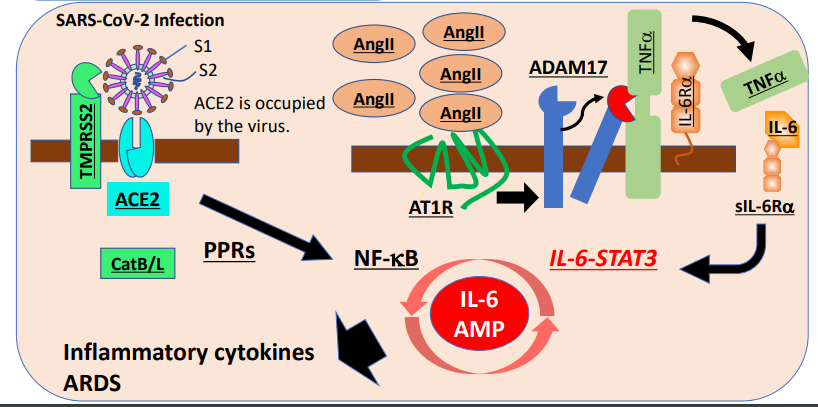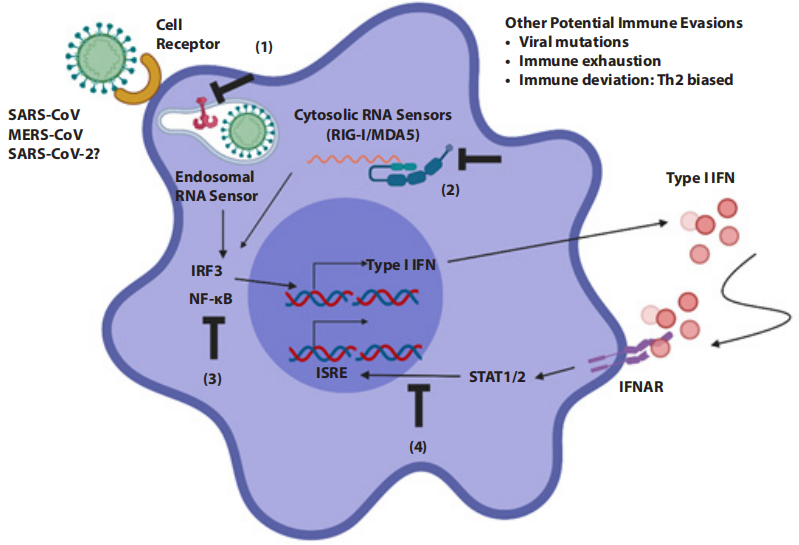The common targets of SARS-CoV-2, SARS-CoV and MERS-CoV acting on the organism
In 2020, a new coronavirus, SARS-CoV-2, is sweeping the world. Infection of the organism can cause diseases with the respiratory system as the main symptom. The Middle East Respiratory Syndrome (MERS) in 2012 and Severe Acute Respiratory Syndrome (SARS) in 2002 were also caused by coronavirus infections, MERS-CoV and SARS-CoV, respectively.
According to the genome structure of coronavirus, coronaviruses can be divided into four categories: α, β, γ and δ. α and β only infect mammals, γ and δ mainly infect poultry. SARS-CoV-2, SARS-CoV and MERS-CoV belong to the β category. The genome structure is as follows:

Figure 1. The genome structure of SARS-CoV-2, SARS-CoV and MERS-CoV
1. SARS-CoV-2, SARS-CoV and MERS-CoV infected organism depend on the activity of TMPRSS2
The S protein of SARS-CoV-2 retains the structural conformation of the interaction between SARS-CoV and receptor ACE2, and it has been shown that the mechanisms of SARS-CoV-2 and SARS-CoV infection are same. SARS-CoV-2 and SARS-CoV infection organism depend on the activity of TMPRSS2. Unlike SARS-CoV-2 and SARS-CoV, MERS-CoV recognizes DPP4 (CD26) receptor, but the infection also depends on the activity of TMPRSS2, the activation of TMPRSS2 can induce the fusion of virus and cell membrane.
2. The immune response of SARS-CoV-2, SARS-CoV and MERS-CoV infected human organism
Innate immune cells recognize the invasion of virus, which activate NF-κB and STAT3, and activate the release of a large number of downstream cytokines, resulting in fatal acute respiratory distress syndrome. The patients infected with SARS-CoV-2, total neutrophils increased, lymphocytes decreased about 35%, IL6 increased about 52%, CRP increased about 84%, and accompanied with MCP-1, MIP-1A, TNFα, IL2, IL8, IL10, IFNγ, MIP-1B, IL15, IL17, CCL5, IFNβ, CXCL10 increased. In the serum of SARS-CoV and MERS-CoV infected patients, the cytokines of IL6, CRP, MCP-1, MIP-1A, TNFα, IFNγ, IL10, IL15, IL17, CCL5, IFNβ, CXCL10 were also increased. This suggests that COVID-19, SARS and MERS may be cytokine storms mediated by similar cytokines.

Figure 2. Ideograph of acute respiratory distress syndrome (ARDS) induced by cytokine overproduction when the organism is infected with SARS-CoV-2
(Image source: COVID-19: a new virus, but an old cytokine release syndrome)
Some studies have also shown that the N protein of highly pathogenic SARS-CoV-2, SARS-CoV and MERS-CoV can aggravate lung injury through MASP-2 mediated complement over-activation.
3. The antiviral response of SARS-CoV-2, SARS-CoV and MERS-CoV infected human organism
Coronavirus is a kind of RNA virus, which is recognized by RNA recognition receptors in vivo, such as TLR3, TLR7, etc., and then activate downstream cascade reactions, such as: NF-κB, IRF3. At the same time, with nuclear transfer, transcription factors can induce the release of I Type interferon and pro-inflammatory factors. This can be seen as the first line of defense for viruses to invade the organism. In order to evade the antiviral response of the organism, the M protein of SARS-CoV-2, SARS-CoV and MERS-CoV relies on a certain level of phosphorylation of TBK1 and the activation of IRF3 to inhibit the type I interferon reaction, then inhibite the antiviral response .

Figure 3. Ideograph of organism antiviral response
(Image source: Immune responses in COVID-19 and potential vaccines: Lessons learned from SARS and MERS epidemic)
The following table is part of common targets of SARS-CoV-2, SARS-CoV and MERS-CoV acting on the organism:
Target Name | Catalog No. | Target Name | Catalog No. |
TMPRSS2 | C795 | NF-κB | B824 |
STAT3 | B743 | IL6 | A079 |
CRP | A821 | MCP-1 | A087 |
MIP-1A | A092 | TNFα | A133 |
IL10 | A056 | IFNγ | A049 |
IL15 | A061 | IL17 | A063 |
CCL5 | A116 | IFNβ | A222 |
CXCL10 | A371 | TLR3 | B989 |
TLR7 | B950 | IRF3 | B589 |
TBK1 | H061 | STAT1 | B740 |
STAT2 | B796 | MASP-2 | A859 |


